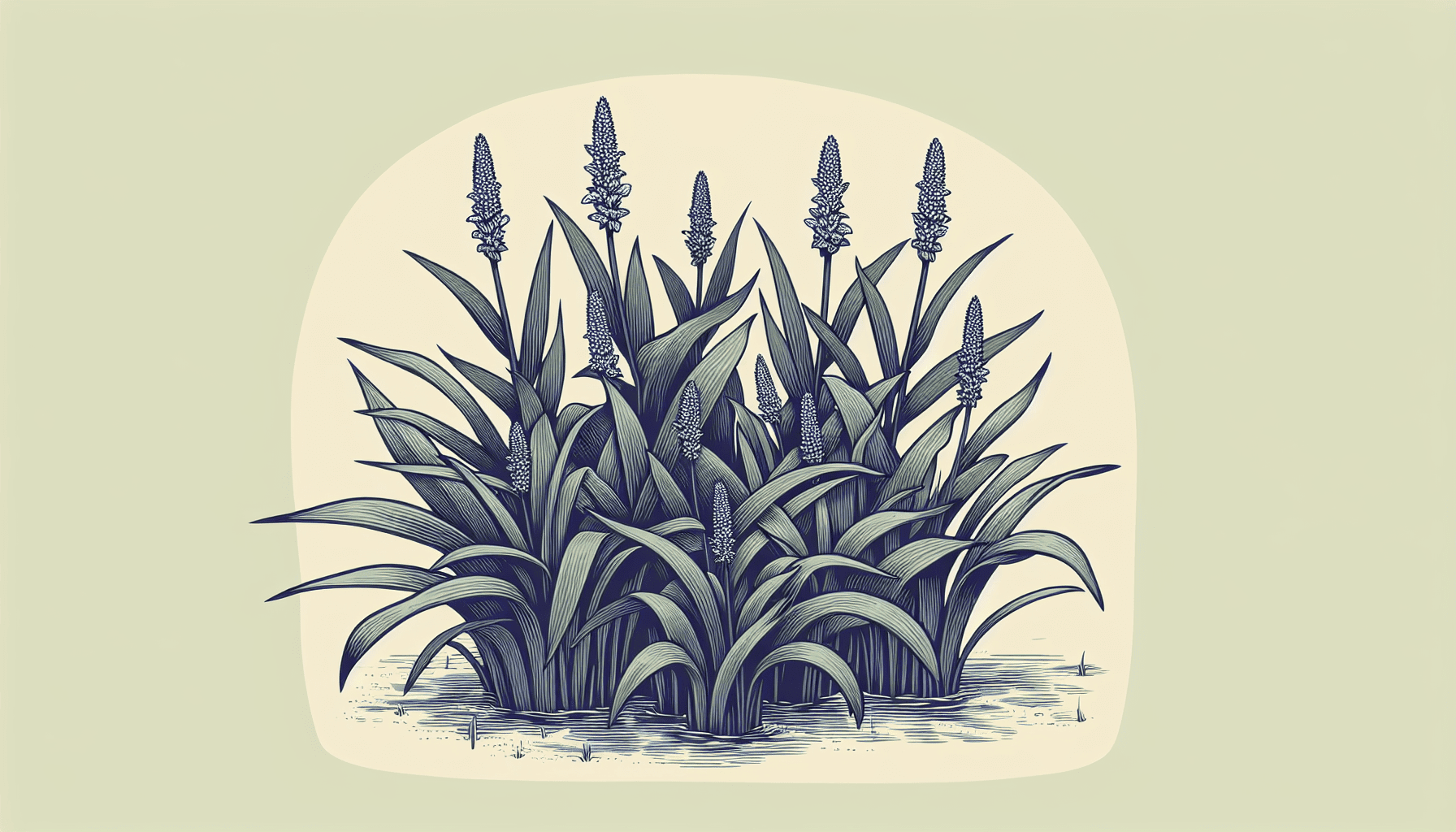Navigating through the diverse body of studies highlighting the vast array of aquatic plants, you may have stumbled upon an intriguing green called Acorus. This particular flora, often deemed as a weed, may have escaped your attention in its natural aquatic habitat, but now the opportunity presents itself to better comprehend this understudied yet intriguing species. The impending revelation of the ecological role, impact, and potential uses of this water-dwelling weed lie within the forthcoming discourse of this article. Therein you will unearth the scientific background and contemporary studies surrounding this aquatic curiosity, Acorus.

Understanding the Classification of Acorus
In botanical taxonomy, a systematic way of classifying plants, such classification is crucial knowledge for individuals studying botany and related subjects. Acorus is a name you might be familiar with, particularly if your interest lies in aquatic plants.
Defining Acorus
Acorus is a genus of plants known for its distinctive aquatic characteristics. In Greek mythology, acorus was referred to as the ‘water flower’ due to its preference for moist or waterlogged environments. The name Acorus is derived from ‘acoron’, which was named in directive relation to ‘acoron’ used by Dioscorides, a Greek physician in the 1st century AD, implying a shared commonality by which these plants are identified and studied.
Scientific Classification of Acorus
The scientific classification of Acorus is found within the Plantae kingdom, under the Acoraceae family. This family classification in the plant kingdom is mono-generic, with only the Acorus species. Also, its class is the monocotyledonous, with its order placed in the Acorales.
Different Species within the Acorus Genus
In the scientific world, variations exist within the Acorus genus with only about two to four recognized species worldwide. The two principal species you commonly refer to are Acorus calamus, commonly known as sweet flag, and Acorus gramineus, the Japanese rush. These two species have numerous variations used for myriad purposes across different cultures.
Acorus as an Aquatic Weed: Key Characteristics
Understanding the key features of Acorus enhances one’s knowledge about this fascinating aquatic plant.
Physical Features of Acorus
Acorus, especially Acorus calamus, is known for its tall, slender, and erect leaves, much similar to the common irises. The leaves range from a bright green to yellow-green. The plant also features spadix that is densely packed with tiny flowers with six sepals and petals.
Growth Cycle and Reproduction
The Acorus primarily propagates via their rhizomes, which grow into new plants when separated from the parent plant. They also sporadically produce seeds, typically through self-pollination. Such a robust propagation strategy allows the plants to colonize new territories rapidly.
Habitat Requirements
Primarily, Acorus favors damp environments, often found along the edges of ponds, lakes, and slow-moving streams. This preference for water-rich habitats enables the plant to thrive in aquatic and semi-aquatic conditions.
Contributions to Biodiversity
In their natural environments, Acorus plants serve as excellent habitats for a range of small aquatic creatures and insects. Birds also utilize them for nesting materials, making them substantially influential in promoting biodiversity.
Economic Importance of Acorus
Beyond their ecological role, Acorus spp. have essential economic implications.
Acorus in Aquaculture
Due to their rapid growth and relative ease of propagation, Acorus plants are often used in aquaculture, serving as a valuable source of food for aquatic animals and creating micro-habitats within the ecosystem, providing shelter and breeding grounds for various species.
Acorus in Horticulture
In horticulture, Acorus species are popular in water gardens and ponds due to their distinctive foliage and tolerance for wet conditions. It is often used in landscaping for property beautification and, to a certain extent, soil stabilization.
Other Commercial Uses of Acorus
Commercially, Acorus is used to produce essential oils that are often used in traditional medicines, perfumery, aromatherapy, and a variety of cosmetic products due to its fragrant nature.
Ecological Impact of Acorus
While Acorus species provide several benefits, they can also pose significant ecological impacts, particularly when introduced into non-native environments.
Effect on Native Flora and Fauna
Once established, Acorus species, particularly A. calamus, can crowd out native plant species, thereby reducing biodiversity. The dense growth can also alter habitat structures, adversely impacting native fauna.
Impact on Water Quality
Acorus plants can alter the chemical balance of the water bodies they inhabit. They can absorb heavy metals from the water, thus reducing water toxicity, but also changing the water pH, leading to potential effects on other aquatic organisms.
Acorus as a Bioindicator Species
The ability of Acorus to tolerate pollution and heavy metals has led to its use as a bioindicator species in environmental monitoring. It acts as an early warning system for detecting changes in ecosystem health.

Traditional Medicinal Uses of Acorus
The Acorus has a long history of medicinal use in various cultures.
Acorus in Ayurvedic Medicine
In Ayurveda, Acorus calamus is known as ‘Vacha’. Its root is used in managing numerous ailments ranging from coughs, colds, bronchitis, asthma, fevers, to digestive disorders. It is also used as a rejuvenating herb for the nervous system and brain.
Acorus in Traditional Chinese Medicine
In Traditional Chinese Medicine, Acorus gramineus, known as Shi Chang Pu, is used for its calming effects on the nervous system. It’s also applied for disorders associated with digestion, bloating, and reduced appetite.
Current Research on Medicinal Properties of Acorus
Numerous studies are ongoing regarding the potential benefits of Acorus species in contemporary medicine. Initial results suggest that the plant has promising therapeutic properties such as anticancer, anti-inflammatory, neuroprotective, and antimicrobial effects.
Cultural Significance of Acorus
Historically, the Acorus species has held significant cultural importance.
Acorus in Folklore and Mythology
In various cultures, this plant is associated with wisdom and learning. In Greek mythology, Acorus was the favorite plant of the goddess of memory, Mnemosyne. In Egypt, it was revered as a symbol of the sun god Ra.
Historical Uses of Acorus
Acorus has been used in various ways throughout history. It has been used as a potent ingredient in herbal medicine, for making perfumes, and in sacred ceremonies.
Modern Cultural Practices Involving Acorus
Today, Acorus is still used in many cultural activities and traditional practices. For instance, in Japan, Acorus is a part of the New Year celebrations, symbolizing a new start.
Potential Drawbacks and Risks of Acorus
Despite its numerous roles and benefits, there are certain negative implications associated with Acorus.
Invasiveness and Threat to Biodiversity
Acorus is highly invasive in nature. Due to its rapid growth cycle, the plant can quickly multiply and become a dominant species in freshwater habitats, outcompeting native plants and disrupting ecosystems.
Health Risks Associated with Acorus
Certain chemical components found in Acorus, more notably in Acorus calamus, have been identified as potentially harmful. β-asarone, for instance, is considered carcinogenic, implying caution in consuming or handling these aquatic plants.
Current Regulations on Acorus Cultivation and Disposal
In some countries, there are restrictions on the cultivation, trade, and disposal of Acorus calamus due to its invasive characteristics and the potential risks posed by β-asarone to human health.
Management and Control of Acorus
Given the potential environmental hazards posed by Acorus, understanding effective control methods is crucial.
Preventing Infestations of Acorus
Prevention is the most effective method of control. Educating the public about the potential risks of Acorus and encouraging responsible gardening practices are vital.
Mechanical Control Methods
For already-established infestations, manual or mechanical methods such as digging or pulling out the plants can be effective. However, this can be challenging due to the plant’s robust rhizome network.
Chemical Control Methods
Chemical control methods using herbicides can also be effective. Still, these can also have potential adverse environmental implications, affecting non-target species and overall ecosystem health.
Biological Control Methods
Biological control methods, involving the use of natural enemies of Acorus, are relatively unexplored but may offer promising solutions for the future.
Integrated Weed Management Approaches
Combining different control methods in an integrated weed management strategy can be effective, balancing the advantages and disadvantages of each method to minimize both Acorus proliferation and environmental impact.
Future Research Directions on Acorus
With ongoing debates about the benefits and drawbacks of Acorus spp., more research is necessary.
Unresolved Questions about Acorus Biology
Despite much knowledge about Acorus, many questions about its biology and ecology remain. Research is required to understand its spread mechanisms better, its interaction with other species, and its exact environmental role and impact.
Potential Improvements for Acorus Management and Control
Further research is also crucial to improve our current methods of Acorus control. This could encompass studying more efficient mechanical removal strategies, safer chemical control solutions, and the potential of biological control.
Emerging Technologies for Studying Acorus
Emerging technologies, such as DNA barcoding and remote sensing, can also significantly enhance our understanding of Acorus. These could facilitate faster, more accurate identification of Acorus species and help monitor their spread in real-time.
Conclusions: Weighing the Benefits and Problems of Acorus
The Acorus plant species undoubtedly possess both beneficial properties and challenging issues.
Summarizing the Ecological Roles of Acorus
On the one hand, Acorus spp. play significant ecological roles. They provide habitats for a variety of creatures, contribute to biodiversity, and serve as bioindicators to monitor the health of ecosystems. But on the other hand, they can also pose threats by altering habitats and reducing native biodiversity.
Summary of Economic and Cultural Importance of Acorus
The economic and cultural importance of Acorus spp. is substantial, from providing food in aquaculture to acting as ornamental plants in horticulture and playing significant roles in traditional medicines, folklore, and celebrations.
Addressing Societal and Environmental Impacts of Acorus
However, the societal and environmental implications of Acorus cannot be overlooked. The potential for Acorus spp. to become invasive can pose significant ecological risks, while the health risks associated with the plant’s chemical components underscore the need for caution in their use.
Therefore, our relationship with Acorus spp. must be a careful balance, optimizing their benefits while minimizing their problems. This will require ongoing research, effective management strategies, and public education. Only by understanding and respecting these remarkable plants can we hope to secure a sustainable future with them.